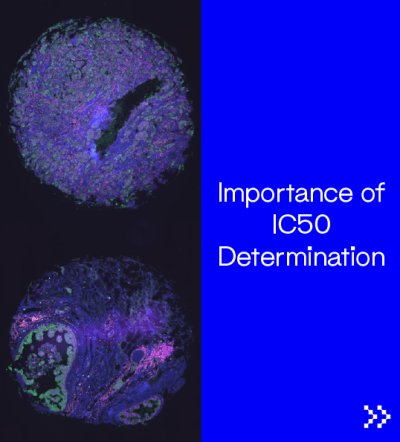 The pharmaceutical industry relies on the products it develops. A major factor that heavily affects the success of these products are the effectiveness of each pharmaceutical drug. It is believed that the five main factors to affect success of pharmaceutical products are-
The pharmaceutical industry relies on the products it develops. A major factor that heavily affects the success of these products are the effectiveness of each pharmaceutical drug. It is believed that the five main factors to affect success of pharmaceutical products are-
- Unmet need and burden of disease
- Clinical efficacy
- Comparators
- Safety
- Price
Clinical efficacy is second on the list, which is how well the treatment succeeds in its purpose. For example, an anti-cancer drug should inhibit cancer cell growth. Drug effectiveness is most often determined by IC50 in drug discovery and pharmacology studies.
IC50
IC (inhibitory concentration) curves are dose response curves used to determine the specific drug concentration required to reduce the population of viable cells by a particular percentage when compared to cells grown with no exposure to the drug. The IC50 stands for inhibitory concentration at 50% which means this is one half the maximal inhibitory concentration of a compound. It is important to use the IC50 value because it indicates how much of a drug is needed to inhibit a biological process by half. The IC curves show a change in population because of increased cell death or decreased cell proliferation.
Finding the IC50 can mean much more than only inhibiting the growth of cells or increased death of cells. In cancer, using certain drugs at the IC50 concentration means inhibit growth of a tumor by half. When testing for the IC curves, if the IC50 is found at a lower concentration, this means that the drug will be effective at lower concentrations and therefore will cause lower systemic toxicity when given to patients for treatment. Using the IC50 concentration can mean killing cancer cells and stopping cancer cell growth, while having a less toxic effect on the healthy cells in the body.
IC50 and Assays
Scientific research models require the best concentration of the compound for the assay and cell type in use. For models such as blood brain barrier, the health of the cells which form the barrier is critical. The Blood Brain Barrier model is used to represent the semipermeable barrier in vitro and, therefore, one of the main goals of this model is to keep the cells of the barrier alive while introducing compounds to the model to assess the permeability of the membrane formed. If a concentration is too high, it can be toxic to the cells, destroy the membrane, and allow all compounds to pass which would end in false results. The IC50 is crucial to models like this and others which is why the scientists at Visikol highly recommend finding the IC curves and determining the IC50 prior to working with new fewer known compounds to ensure the 2D and 3D assays perform to the best of their ability.
Researchers in Visikol’s Pharmacology and Drug Discovery division are skilled in toxicity assessment and screening in 2D and 3D cellular based assays. Visikol suggests determining the proper concentration to use in the desired assays through dose range and IC50 determination. This process uses a 2D assay of the cell line of interest. The cells are plated and treated with various concentrations of the test compounds which is typically an eight point dose range, as well as, vehicle and media only controls. Cell viability is assessed through a luminescent ATP assay or immunolabeling endpoints.
If you are interested in learning more about this technique or any of the other many research opportunities at Visikol, please reach out to our team. We are always interested in working together with our clients as a team to develop customized assays to best suit their needs.
